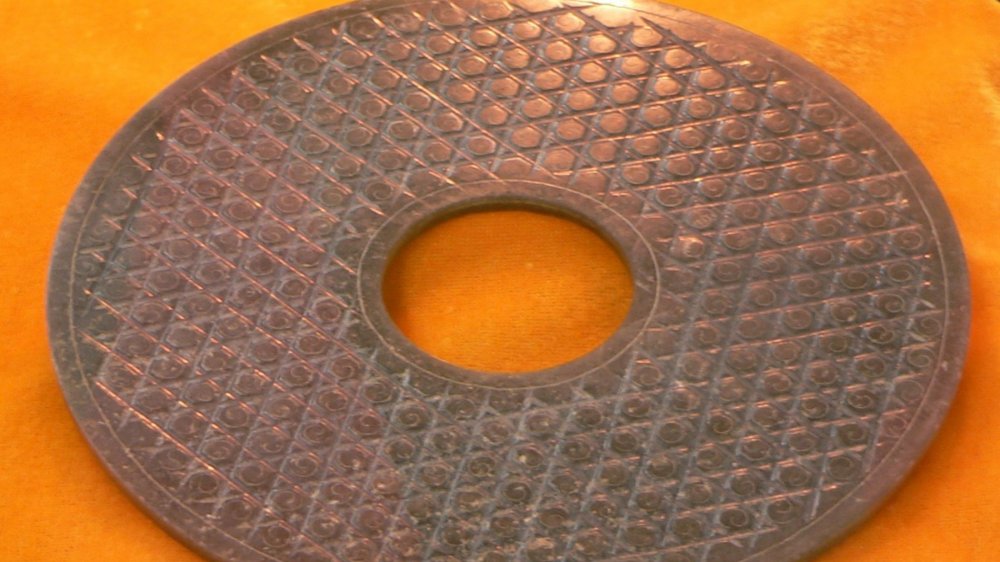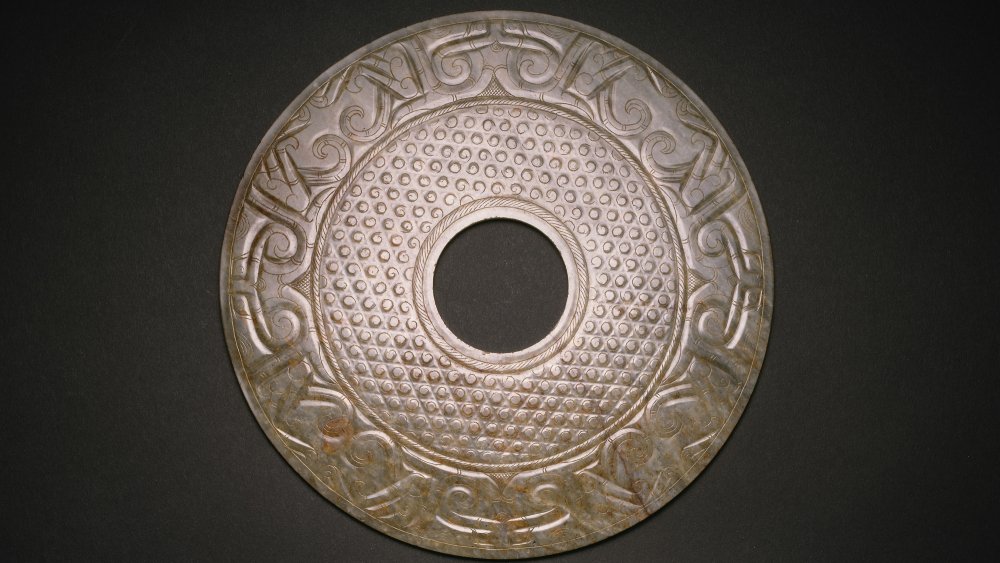The Legend Of The Dropa Stones
The legend of the Dropa Stones has been floating around fringe circles since it was first published around 1960. According to the story, a Chinese archaeologist named Chi Pu Tei was working in the caves of the Bayan Kara Ula region, near the Tibetan border, in 1938. First, he discovered even rows of graves, which contained the remains of mysterious skeletons that were only four feet tall, with abnormally large skulls, according to Ancient Origins.
The walls of the adjacent cave systems were covered with art, depicting beings who were wearing large helmets, surrounded by images of the sun, moon, stars, and Earth. But the excavation of what appeared to be the bodies of little alien men was just the beginning of Tei's discoveries. Further into the caves, Tei made his most famous find: a series of 716 circular stone disks with tiny hieroglyphic markings etched on them, some partially buried under the cave floor.
Tei brought the stone discs back to Beijing University, where they were stored until a professor named Tsum Um Nui began closely studying them in 1958. According to Nui's research, the stones were at least 12,000 years old, and the hieroglyphics were telling the origin story of the Dropa aliens. After just four years, Nui claimed to have deciphered the markings and translated the text, which recounted how a spaceship carrying the Dropa people had crash-landed on earth.
The Dropa people crash landed on earth
Unable to leave the planet, the surviving Dropa aliens were either hunted down by the local Ham tribesmen, or intermarried with the locals and adapted to life on earth, reports Bad Archaeology. According to the translations, one disc proclaimed (via Ancient Origins): "The Dropa came down from the clouds in their aircraft. Our men, women and children hid in the caves 10 times before sunrise. When at last we understood the sign language of the Dropas, we realized that the newcomers had peaceful intentions."
It would have been a world-changing discovery, except for one thing: the stones don't actually exist. The story was published in various magazines throughout the 1960s, including UFO-Nachrichten, a German UFO magazine, but there never appeared to be any tangible evidence to support the legend, says Bad Archaeology. There are no records of the artifacts ever having been displayed in any museum, and the last scientists to have searched for them in 1994 were told the discs were destroyed. The few photos that exist of the stones were taken by an Austrian engineer, Ernst Wegerer, in 1974, and they appear to show nothing more exciting than Bi discs — round jade discs that were commonly found in the Shaanxi Province.
The lack of evidence, combined with the fact that there are no records of either Chi Pu Tei's expedition or Tsum Um Nui's existence, have led most archaeologists to believe the Dropa stones are nothing more than a hoax.

